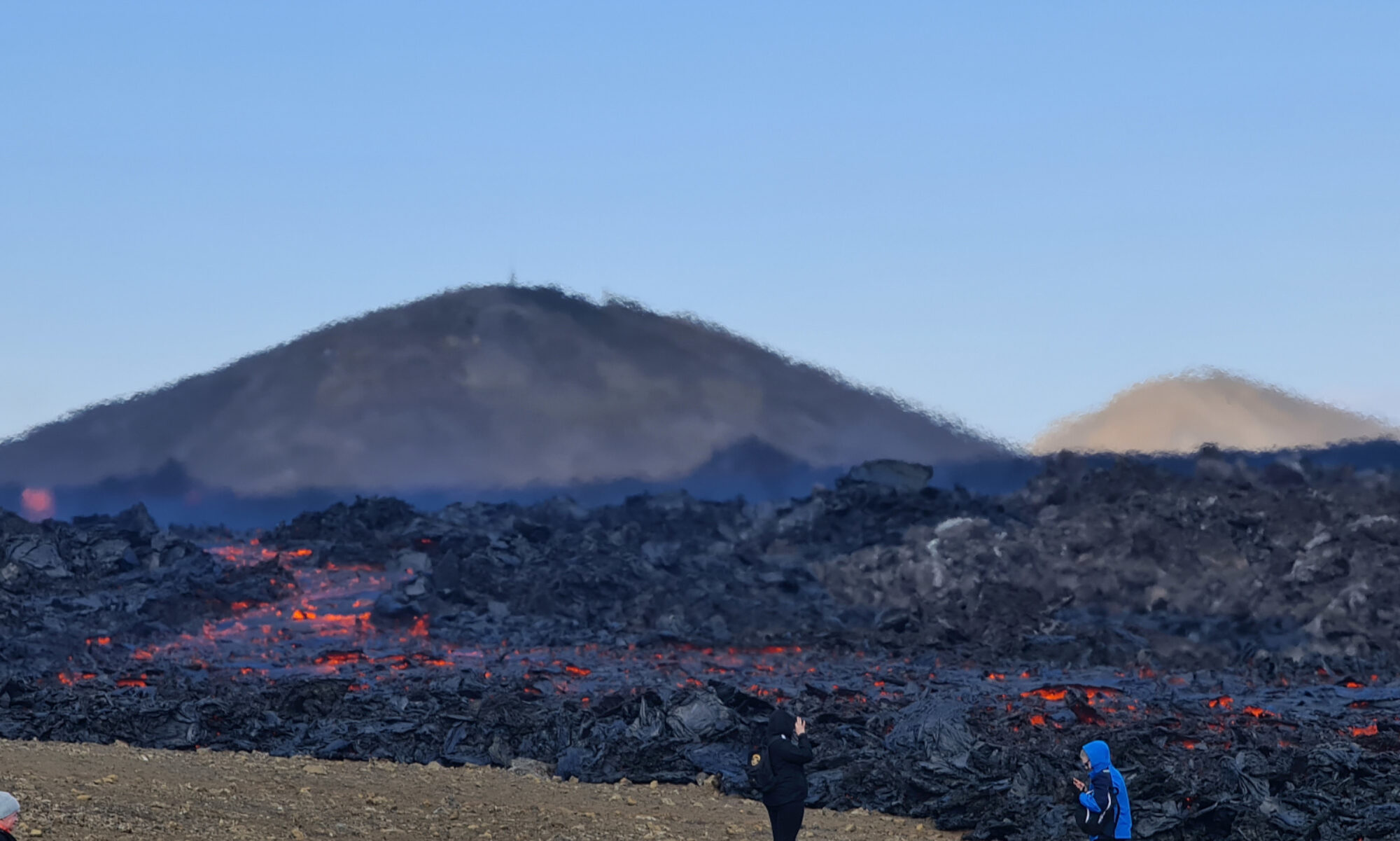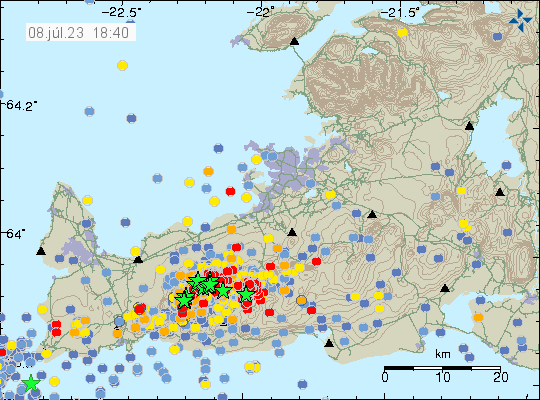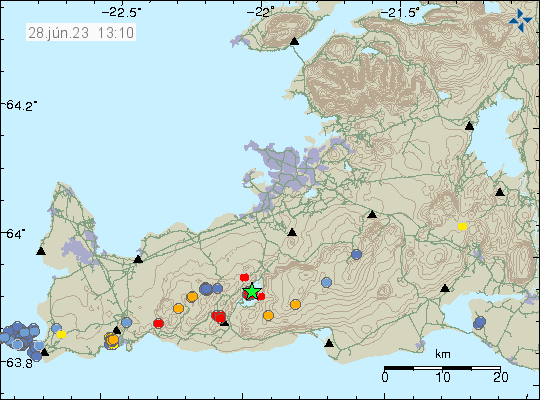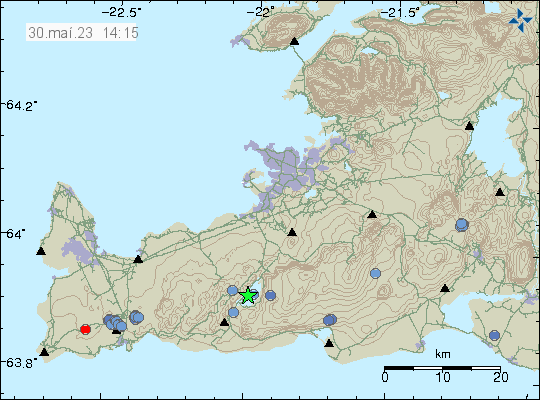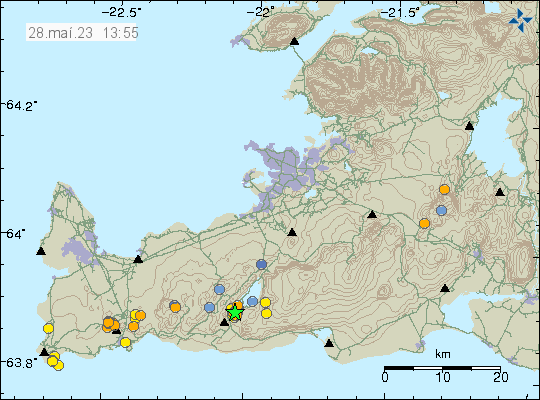Today (5. October 2023) two earthquakes took place that are connected to Fagradalsfjall volcano inflation. The first one was a magnitude Mw3,3 in Krýsuvík-Trölladyngja volcano. This was a tectonic earthquake because of inflation in Fagradalsfjall volcano. The second earthquake was north of Grindavík town and had a magnitude of Mw3,2. That earthquake was part of an earthquake swarm and dyke intrusion in that area. That area north of Grindavík town has been seeing a lot of earthquake activity in recent weeks, all connected to dyke intrusion activity.

The increase in activity in recent weeks strongly suggests that an eruption is going to happen soon. When is impossible to know and earthquake activity is too low at the writing of this article for an eruption to be happening today. This might change without warning, as has happened in the last two eruptions. There is a possibility that something has changed after the last eruption, but the answer to that question won’t happen until next eruption. All that can be done now is to wait and see what happens.
